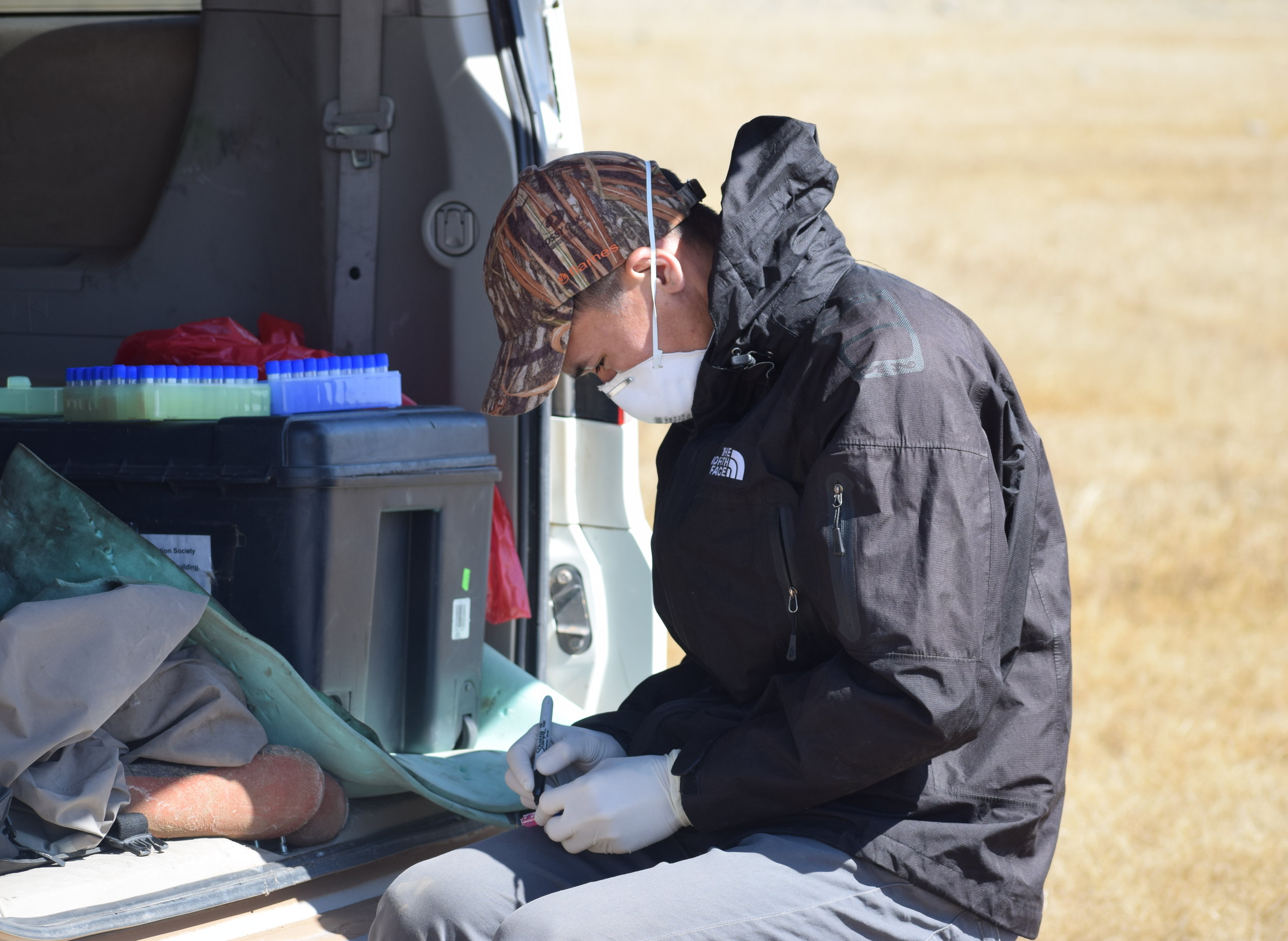PHOTO: PREDICT/Mongolia avian influenza surveillance team inspecting a common shelduck as part of the outbreak response
RAPID RESPONSE TO WILD BIRD DIE-OFF
Mongolia
On August 11, 2018, local veterinarians notified the provincial veterinary office of a large die-off of wild birds at Sangiin Dalai Lake (N47.40, E94.96) in Western Mongolia. On August 24, the PREDICT/Mongolia team in Ulaanbaatar was alerted to the event by local government veterinarian contacts, and the State Central Veterinary Laboratory (SCVL) shared initial in-house test results that were negative for avian influenza and Newcastle disease virus. On the same day, the PREDICT/Mongolia avian influenza surveillance team was redirected to the die-off site to assess the situation and collect samples, as they were already en route to the region to conduct field work.
Sangiin Dalai Lake is a salt water lake located at front edge of the Mongol Els Protected Area in Khokhmorit Soum, Gobi-Altai Province. The lake is surrounded by sand dunes and small sandy hills.
PHOTOS (clockwise from top-left): wild shelduck; Ariunbaatar Barkhasbaatar in the field; Batchuluun Damdinjav performing a necropsy at Sangiin Dalai Lake; Ariunbaatar with camera equipment
Once in the area, the PREDICT team worked closely and successfully with SCVL staff, local veterinarians, environmental inspectors of the district, and Mongol Els Protected Area rangers to implement response activities. For several days in late August, they observed and identified the bird species, conducted a shoreline transect to detect and count sick and dead birds, necropsied and sampled dead birds, collected guano samples,and met with herders in the vicinity of the lake. Clinical signs exhibited by the sick birds included extreme weakness, inability to fly or swim, wing droop, and bent necks (torticollis). During the survey, the team identified 12,648 individuals of 49 species. Common shelducks represented 70% of the 254 dead birds, with smaller numbers of gulls and avocets, mallards, and teals. Combined with earlier government surveys a total of 3,216 bird deaths were recorded. PREDICT collected a total of 85 samples at Sangiin Dalai Lake, including 25 tissue samples, five oral swabs, and five cloacal swabs from dead birds, and 50 guano samples from graylag goose. To assist with interpretation of observations, gross pathology findings and video of birds that exhibited clinical signs of disease were relayed via satellite phone and email to global PREDICT staff.
By August 30, the collected samples were undergoing testing at SCVL, the PREDICT partner laboratory in Mongolia. Additional testing, incorporating PREDICT protocols for avian influenza and paramyxoviruses were negative. Histopathology and bacteriology testing did not identify a pathogen. Additional laboratory testing is ongoing for avian botulisum (Clostridium botulinum) and other toxin-related causes initial in-house test results that were negative for avian influeconsistent with field findings, but the cause of the die-off remains unknown. The PREDICT team used the die-off as an opportunity to share information and recommendations of avian influenza and other potential diseases with local government staff and herders.






